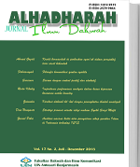
Submissions
Submission Preparation Checklist
As part of the submission process, authors are required to check off their submission's compliance with all of the following items, and submissions may be returned to authors that do not adhere to these guidelines.- Originality and Submission Status: The manuscript must not have been previously published or be under consideration for publication elsewhere. It should also be free of any plagiarism. A written statement from the author confirming these conditions must be attached.
-
Language and Formatting: Manuscripts can be written in either Indonesian or English. They should be formatted with 1.08 line spacing using Myriad Pro font, size 10. The paper size should be 156 mm x 234 mm, with the following margin settings: 1.35 cm (top), 0.48 cm (bottom), and 1.9 cm (left and right).
- Word Count: The manuscript should be between 4,000 and 7,000 words in length, including figures, graphs/tables (if any), and the bibliography.
- Abstract Requirements: The manuscript must include an abstract in both English (or Arabic) and Indonesian.
Copyright Notice
Authors Publishing with This Journal Agree to the Following Terms:
-
Copyright and Licensing:
Authors retain copyright and grant the journal the right of first publication. The work will be simultaneously licensed under the Creative Commons Attribution-NonCommercial 4.0 International Public License (CC BY-NC 4.0). This license allows others to distribute, remix, adapt, and build upon the material in any medium or format for noncommercial purposes, provided proper attribution is given to the original creator. -
Additional Distribution:
Authors may enter into separate, additional contractual arrangements for the non-exclusive distribution of the journal's published version of the work (e.g., posting it to an institutional repository or including it in a book), with an acknowledgment of its initial publication in this journal. -
Self-Archiving and Online Posting:
Authors are encouraged to post their work online (e.g., in institutional repositories or on their personal website) before and during the submission process. This can lead to productive exchanges and increase the visibility and citation of the published work.






